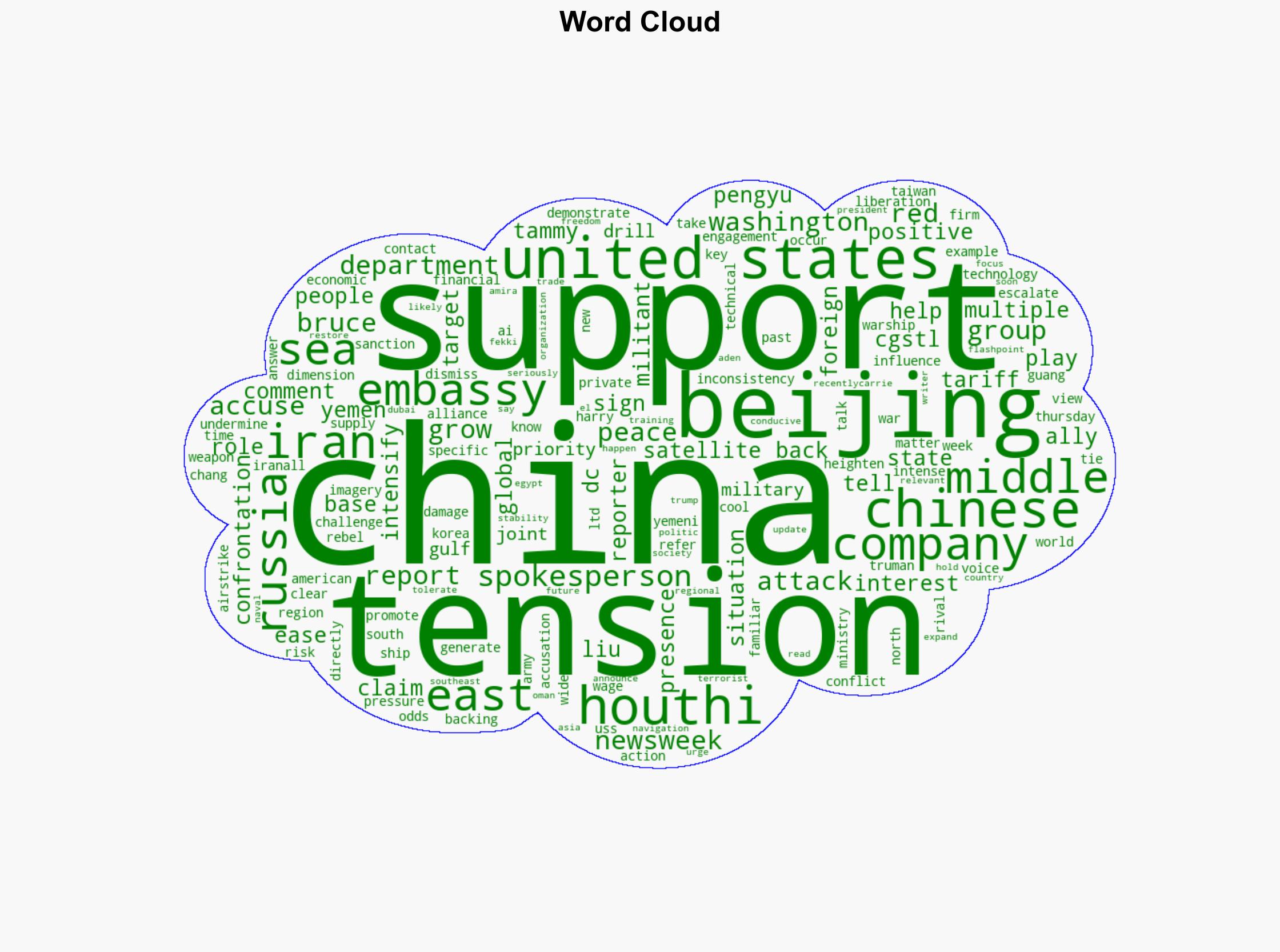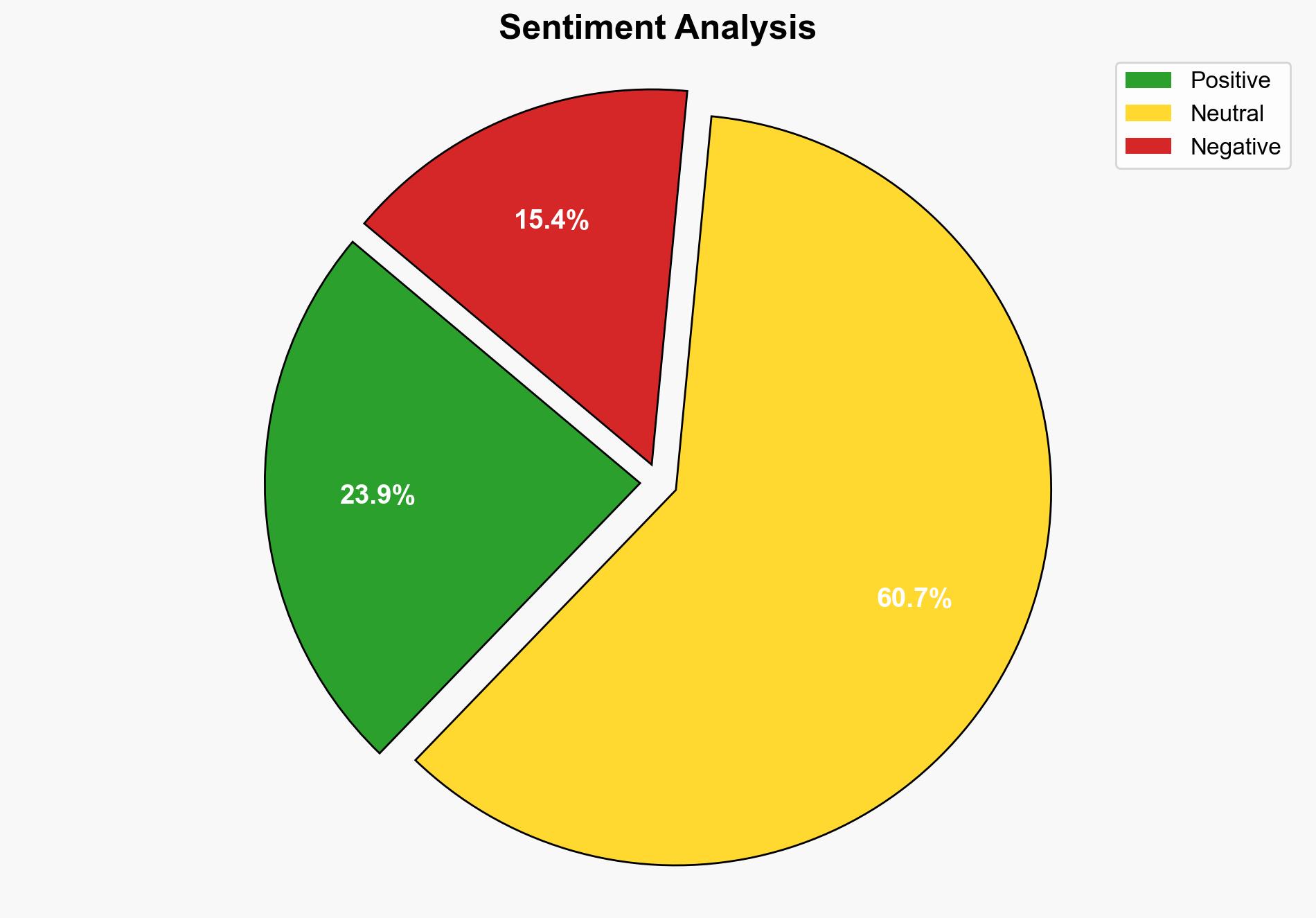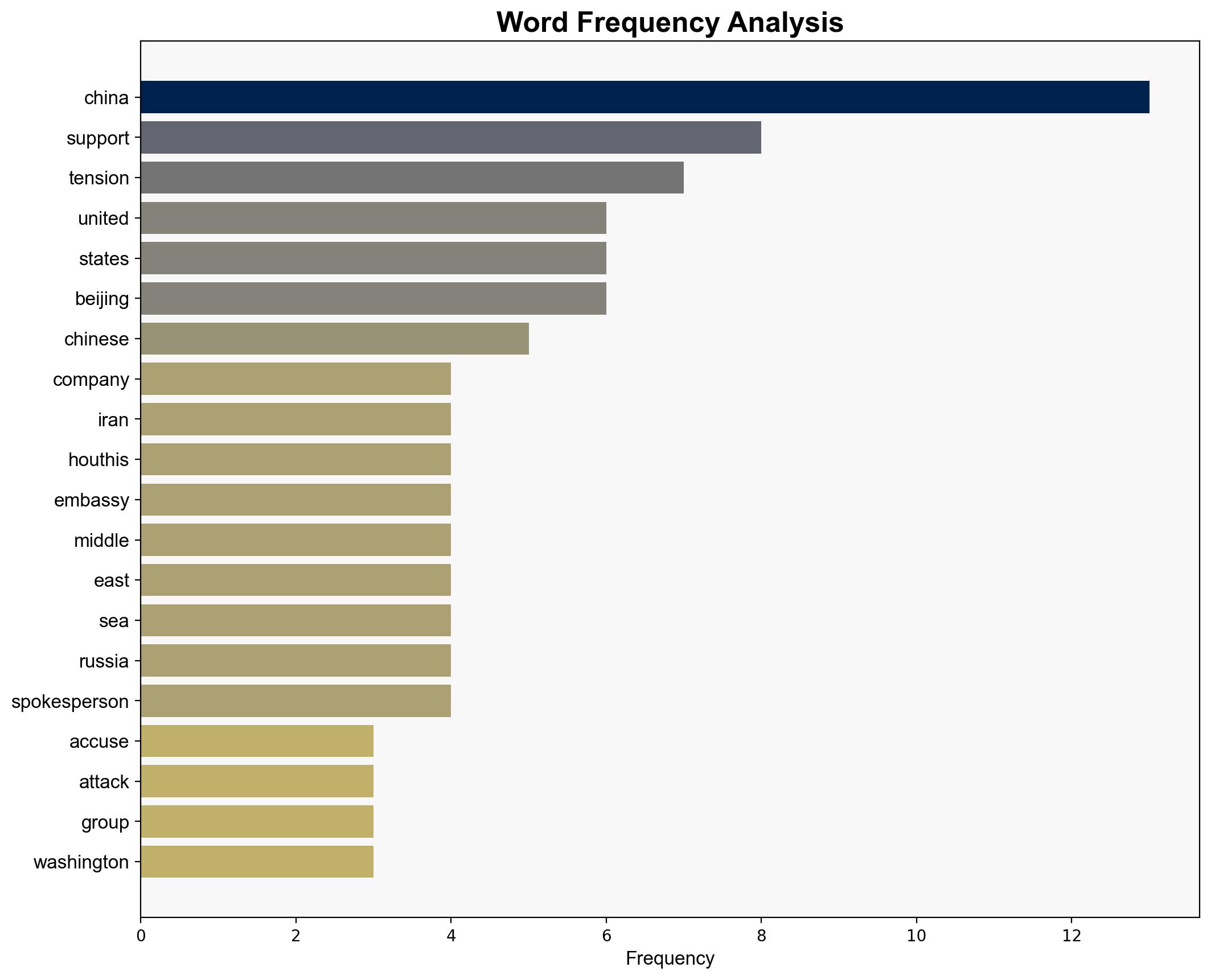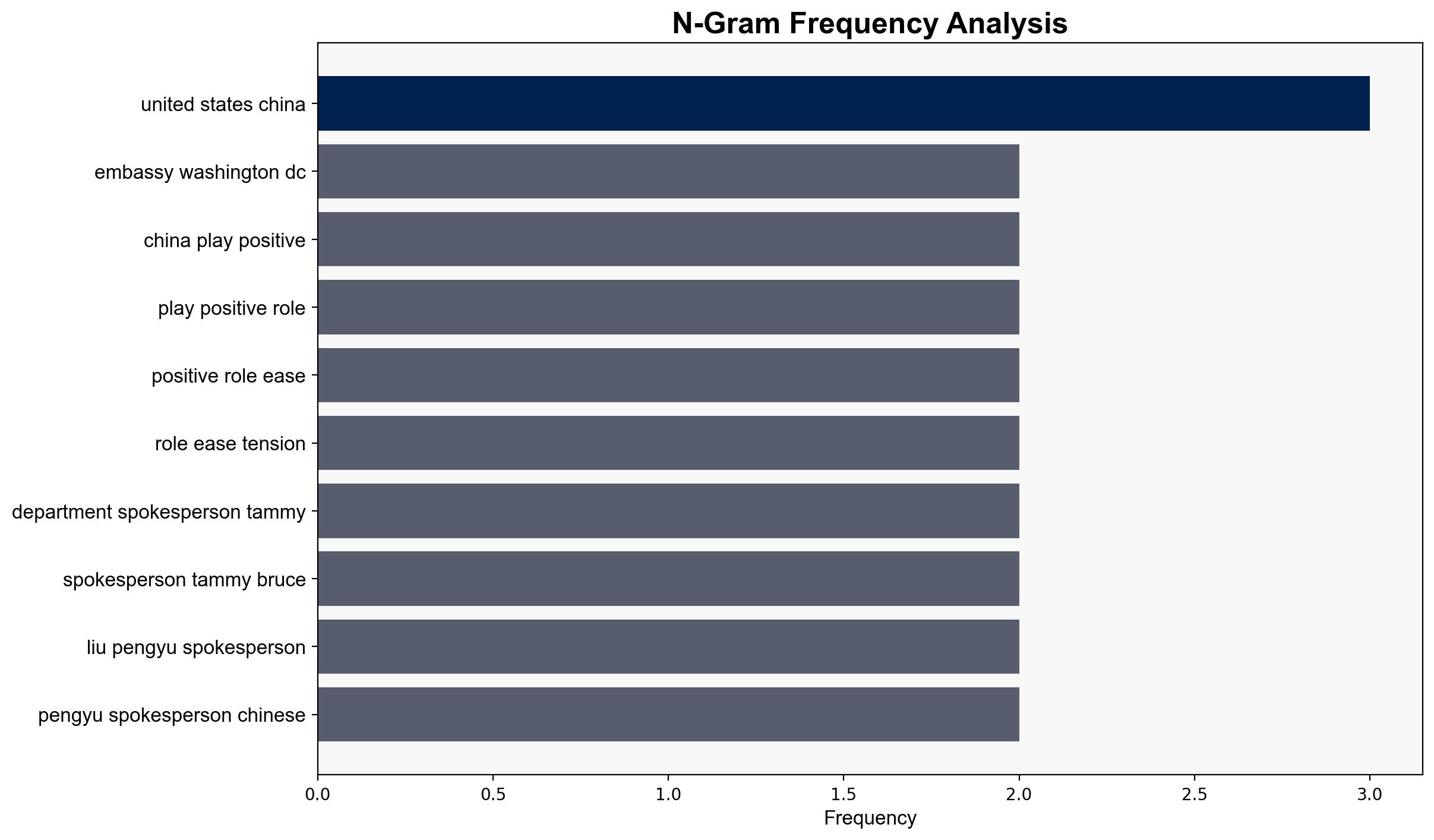US-China Military Rivalry Flares in the Middle East – Newsweek
Published on: 2025-04-18
Intelligence Report: US-China Military Rivalry Flares in the Middle East – Newsweek
1. BLUF (Bottom Line Up Front)
The strategic confrontation between the United States and China is intensifying in the Middle East, with allegations of Chinese support for Iran-backed Houthis against U.S. interests. This development highlights the broader geopolitical challenge posed by China’s expanding influence in the region. Immediate diplomatic engagement and strategic recalibration are recommended to counterbalance China’s activities and safeguard U.S. interests.
2. Detailed Analysis
The following structured analytic techniques have been applied:
SWOT Analysis
Strengths: The U.S. maintains significant military presence and alliances in the Middle East, providing leverage against adversarial actions.
Weaknesses: Increasing Chinese influence through economic and military cooperation with regional actors undermines U.S. strategic positions.
Opportunities: Strengthening alliances with regional partners and enhancing diplomatic efforts can counterbalance Chinese influence.
Threats: Escalating tensions could lead to military confrontations, disrupting regional stability and global trade routes.
Cross-Impact Matrix
Chinese support for Houthis could embolden other regional actors aligned with China, potentially destabilizing neighboring areas and complicating U.S. diplomatic efforts.
Scenario Generation
Scenario 1: Increased U.S. military presence deters further Chinese support for hostile entities, stabilizing the region.
Scenario 2: Continued Chinese military and economic engagement leads to a multipolar power structure, reducing U.S. influence.
Scenario 3: Diplomatic negotiations result in a trilateral agreement, easing tensions and promoting regional cooperation.
3. Implications and Strategic Risks
The growing U.S.-China rivalry in the Middle East poses significant risks to regional security, political alliances, and economic stability. The potential for military conflict and disruption of critical maritime routes necessitates proactive risk management and strategic foresight.
4. Recommendations and Outlook
- Enhance diplomatic engagement with key regional allies to reinforce strategic partnerships and counterbalance Chinese influence.
- Increase intelligence-sharing and joint military exercises with regional partners to deter adversarial actions.
- Develop contingency plans for potential disruptions in maritime trade routes, ensuring economic resilience.
- Scenario-based projection: If diplomatic efforts succeed, regional stability can be maintained, reducing the likelihood of military escalation.
5. Key Individuals and Entities
Tammy Bruce, Liu Pengyu, Chang Guang Satellite Technology Co., Ltd.





